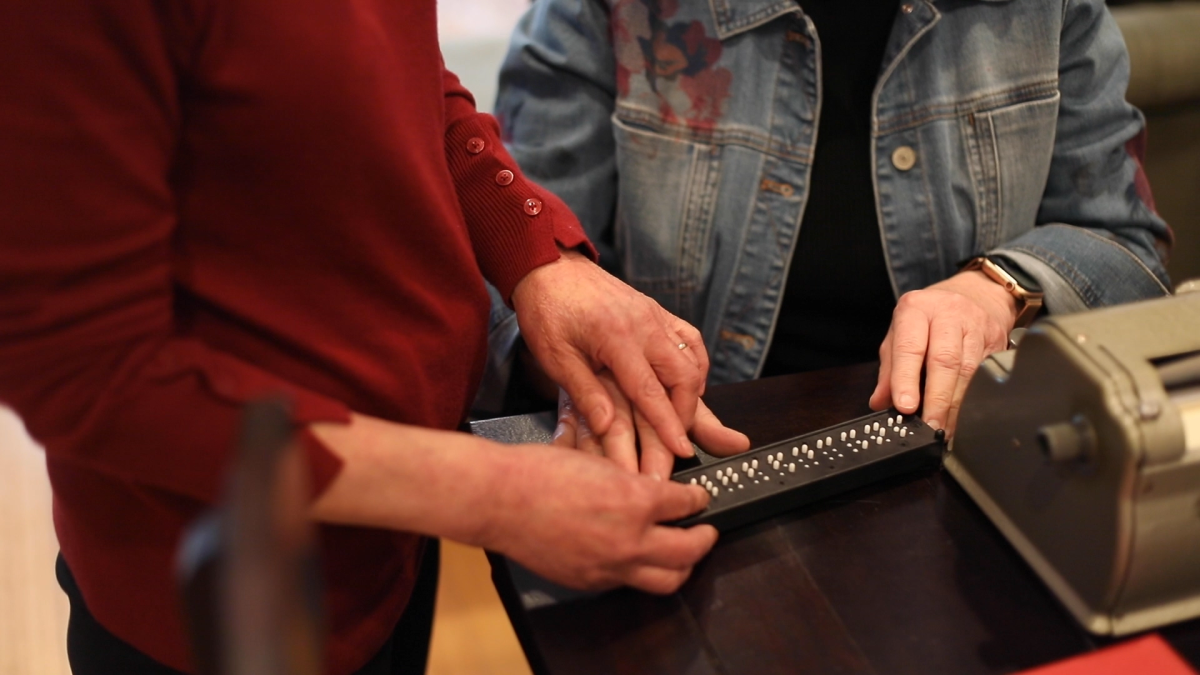Vision Rehabilitation Professionals
Vision Rehabilitation Professionals
Information on areas of specialization, scope of practice, and certifications.

Best Practices for Staff Qualifications
All professional staff serving persons in the OIB programs must be certified (or licensed) in the appropriate discipline and provide services within their respective professional scope. Professional backgrounds must include training or experience in blindness/low vision and working with older adult populations.
National List of Personnel Preparation Programs Accredited by AER
Acceptable Practices
Certified, experienced personnel will closely supervise inexperienced or uncertified professionals with degrees in related fields. A plan with benchmarks and timelines for achieving certification must be in place.
Unacceptable Practices
It is unacceptable for uncertified personnel, regardless of their levels of experience, to provide professional services or certified personnel to provide services outside of their areas of expertise.
Clarifying Comments
Some states have few or, in rare cases, no certified personnel providing services. This practice puts the health and safety of consumers at risk and raises liability concerns for the states and uncertified providers, particularly with regard to orientation and mobility services. It is never appropriate to allow service delivery without quality supervision, particularly if staff are not yet certified or have limited experience working with older adults who have vision loss. Having vision loss does not make a person qualified to provide services. Professionals who have vision loss should also have plans in place to acquire certification or licensure in the appropriate area.
States should select the disciplines appropriate to the services provided and hire personnel with certification (or licensure) and experience in those areas. In cases where staff are already in place without certification or when no certified applicants are available, arrange for supervision by a certified person and develop a plan with benchmarks for progress and a timeline for achieving certification for uncertified personnel. Supervision should include monitoring the competencies of uncertified staff and assuming responsibility for quality service delivery. States are encouraged to pursue contract supervision as appropriate and to explore mentoring and internship programs with benchmarks and timelines for appropriate certification. Agency training is important in professional development and is helpful for certified persons who are potentially inexperienced working with seniors. Agency training is not a substitute for certification or professional education.
Qualified professionals have finished a course of study, completed a 350 hour internship, and passed a certification exam. Two certification organizations offer certifications for professionals who serve individuals who are blind or have low vision. The Academy for Certification of Vision Rehabilitation Professionals (ACVREP) provides certification for the following professionals.
Certified Vision Rehabilitation Therapists (CVRT)
CVRTs provide assessment and instruction in all areas of service, home and personal management; adaptations for reading and writing, including braille; orientation and mobility; use of low vision aids; instruction in the use of assistive devices, including computers and phones; and information and referral. Are the most versatile member of the rehabilitation team, using assessment and instruction to address most aspects of functioning. When needs are identified beyond the CVRT scope of practice, such as outdoor orientation and mobility, referrals are made to the appropriate specialists. For a complete description of this profession visit https://www.acvrep.org/certifications/cvrt
Certified Orientation and Mobility Specialists (COMS)
Provide assessment and instruction to people with low vision and blindness to help them acquire or develop the skills and concepts needed to travel safely and independently indoors or outdoors. COMS provide services across the life span, teaching infants and children in pre-school and school programs, as well as adults in a variety of community-based and rehabilitation settings.
For a complete description of this profession visit https://www.acvrep.org/certifications/coms
Certified Low Vision Therapist (CLVT)
The CLVT uses functional vision evaluation instruments to assess visual acuity, visual fields, contrast sensitivity function, color vision, stereopsis, visual perceptual and visual motor functioning, literacy skills in reading and writing, etc. as they relate to vision impairment and disability. The CLVT also evaluates work history, educational performance, ADL and IADL performance, use of technology, quality of life and aspects of psychosocial and cognitive function. They instruct in the use of prescribed low vision devices.
Learn more about this professional https://www.acvrep.org/certifications/clvt
Certified Assistive Technology Instructional Specialist (CATIS)
A CATIS provides assessment and instruction in the use of computers, tablets, refreshable braille devices, smart phones, and all technology used by people with limited vision or blindness. Learn more about this professional https://www.acvrep.org/certifications/catis
The National Blindness Professional Certification Board (NBPCB) provides certification in the following areas:
National Certification in Rehabilitation Teaching for the Blind (NCRTB)
Professionals with NCRTB specialization provide instruction in the use of non-visual skills to complete activities of home and personal management; braille and audio reading; orientation and mobility; use of assistive technology devices; use of computers and phones, and information and referral. Skills are taught using the structured discovery method.
For a complete description, please visit: https://nbpcb.org/ncrtb/index.php
National Orientation and Mobility Certification (NOMC)
NOMC professionals instruct in the use of a long cane to orient to space and navigate safely through that space using non-visual techniques. Skills are taught using Structured Discovery Cane Travel™ (SDCT™) methods and principles to people of all ages.
For a complete description of this certification and its requirements, please visit https://nbpcb.org/nomc/
National Certification in Access Technology for the Blind (NCATB)
Professionals with NCATB certification are specialists in instruction in the use of computers, tablets, refreshable braille devices, and smart phones and all access technology devices for the blind using Structured Discovery (SD) methods and principles. Instruction is provided to people of all ages with an emphasis on non-visual strategies.
For a complete description of this certification and its requirements, please visit https://nbpcb.org/ncatb/